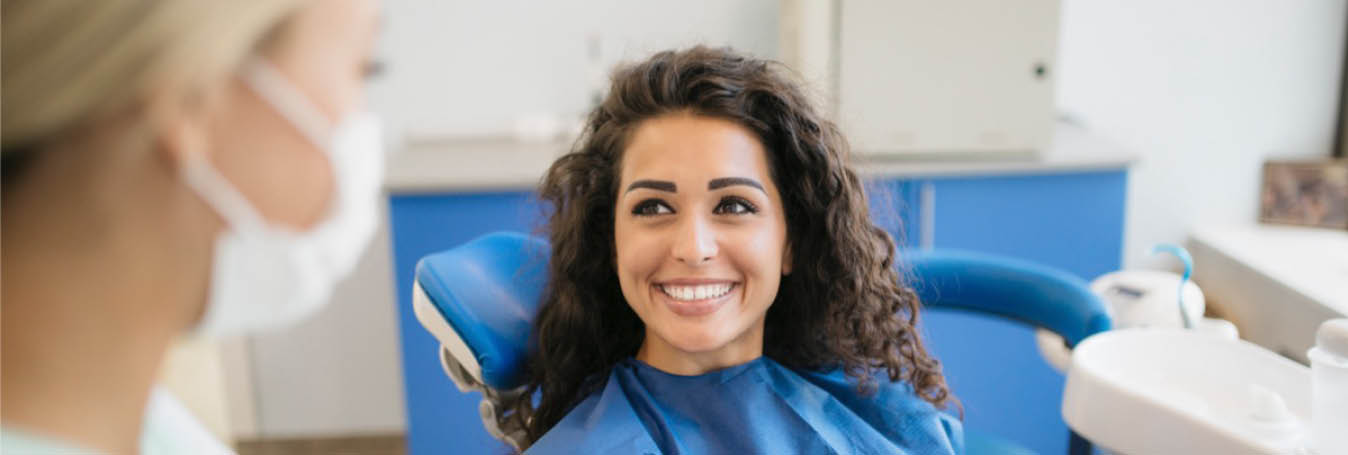Periodontitis causes and risk factors
Have you been experiencing tender, swollen or bleeding gums? Read on because you may be experiencing early signs of periodontitis.
Periodontitis is a more serious form of periodontal disease that affects the bone and soft tissue supporting the teeth. If left untreated, periodontitis can lead to the loosening or loss of a tooth or teeth. People may be more familiar with gingivitis, the milder form of gum disease, but periodontitis is more common than you think! The National Health and Nutrition Examination Study (NHANES 2009-2014) conducted by the Centers for Disease Control and Prevention (CDC) estimated that 42 percent of U.S. adults ages 30 years and older had some form of periodontitis.
Although gingivitis and periodontitis are quite common, bleeding and swollen gums should not be ignored. Fortunately, periodontitis is preventable mainly because the major risk factor is poor oral hygiene over an extended period of time. Let’s take a look at the causes of periodontitis and what conditions or habits may increase your risk.
Periodontitis causes1
Plaque is a sticky film of bacteria that constantly forms on the teeth and other mouth surfaces. If left undisturbed by not brushing and flossing properly over long periods of time, the presence of plaque bacteria can contribute to the development of periodontitis. Let’s look at how plaque build-up can progress to periodontitis:
- Plaque constantly forms on your teeth and along your gumline. The bacteria in plaque feed on the starches and sugars in food and forms acids and other toxins that can affect the teeth and gums. Brushing your teeth twice a day and flossing helps break up and remove this plaque, but be mindful that it re-forms quickly.
- Plaque bacteria can cause gum inflammation, or gingivitis, a milder form of gum disease.
- The minerals in your saliva can harden the plaque into tartar both above and below your gumline. Tartar binds to the tooth and becomes impossible to brush off – it can now only be removed by a dental professional. Tartar collects more plaque and causes inflammation and damage below the gumline.
- Ongoing gum inflammation can progress from gingivitis to periodontitis, causing pockets to develop between your gums and teeth. Over time, these pockets become deeper, filled with even more bacteria. If left untreated, these deep infections lead to loss of the tissue and bone supporting the teeth. Ultimately, those affected run the risk of losing one or more teeth.
Risk factors for periodontitis2
If the gum tissue and bone are significantly damaged, it may require surgery to repair these structures. For that reason, it’s crucial to know the risk factors for gum disease so you can prevent periodontitis from harming your smile and teeth.
- Poor oral hygiene: If not removed consistently from all areas around the teeth and under the gumline, the bacteria in plaque will cause an infection of the gums.
- Smoking: Periodontitis progresses much more quickly in smokers than non-smokers.
- Age: Most cases of periodontitis develop after age 35.
- Diabetes: People with Diabetes Type I and Type II whose blood sugars are not managed have a higher risk of developing periodontitis.
- Poor diet: An unhealthy diet high in processed foods and refined carbohydrates increases the tendency for gums to become inflamed.
- Clenching and grinding your teeth: Excess forces placed on the teeth can speed up the damage caused by periodontitis
- Stress: People with a weakened immune system can be more susceptible to gum disease.
- Genetics: Even with reasonable oral care habits, some people may be more likely to develop gum problems.
Final thoughts
It’s important to be aware of the causes and risk factors of periodontitis so that you can protect your teeth and gums from more significant oral health problems down the road. Make sure to practice good oral hygiene and try to remove plaque build-up at least a couple of times a day to prevent it from becoming destructive. If you have difficulty removing all the plaque, form a lot of tartar on your teeth and gums, or have one or more of the risk factors mentioned above, check with your dentist for early signs of gum disease. Your dentist can help with a long-term plan for keeping your teeth and gums healthy.
Additional resources
Looking for more information? Learn more about gum disease and periodontitis:
Sources
1 Periodontitis. (2020, February 14). Retrieved May 18, 2021, from https://www.mayoclinic.org/diseases-conditions/periodontitis/symptoms-causes/syc-20354473
2 What is periodontitis? (n.d.). Retrieved May 18, 2021, from https://www.efp.org/what-is-periodontitis/
Periodontitis: Symptoms, Causes, Treatment & prevention. (n.d.). Retrieved May 18, 2021, from https://my.clevelandclinic.org/health/diseases/16620-periodontitis
Update on Prevalence of Periodontitis in Adults in the United States: NHANES (2009 – 2012). Retrieved Jun 22, 2021, from www.ncbi.nlm.nih.gov/pmc/articles/PMC4460825/
Periodontitis in U.S. Adults National Health and Nutrition Examination Survey 2009-2014. Retrieved Aug 10, 2021, from https://jada.ada.org/article/S0002-8177(18)30276-9/fulltext#relatedArticles


